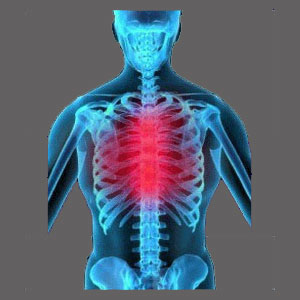
Are you suffering with spinal stenosis? Both central and neuroforaminal stenosis can cause dramatic symptoms and might even disable patients who have extreme conditions. Suffering is certainly a word that most stenosis patients understand, since they demonstrate particular causes of pain that are difficult to relieve and virtually impossible to cure without invasive surgical care.
This discussion provides a first hand perspective on what it is truly like to suffer with spinal stenosis. We will examine both foraminal narrowing, as well as central canal impingement, and detail the sufferings associated with each variety of stenosis.
Suffering with Spinal Stenosis of the Foraminal Openings
Neuroforaminal stenosis is a normal part of getting older, especially in the middle to lower cervical and lower lumbar areas of the vertebral column. Narrowing of these foramina is expected as people age, since the condition is directly motivated by universally-experienced disc desiccation and spinal osteoarthritis in these regions. It must be noted that most cases of foraminal stenosis are not symptomatic and never will become so. It must also be made clear that many cases of incidental back and neck pain are mistakenly attributed to completely nonpathological degrees of foraminal narrowing.
For patients who do demonstrate symptom-generating versions of foraminal narrowing, the results will include the usual consequences of a pinched spinal nerve root. Suffering might begin with pain at the sight of nerve compression, spreading quickly to the area of the body innervated by the impinged nerve tissue. Tingling is also likely to be present at the innervated site immediately or soon after pain begins. In some cases, there might be no pain, but instead, feelings of tingling and paresthesia immediately. Regardless, pain should subside and be replaced by ever-greater degrees of numbness and subsequent weakness in the innervated anatomical zones. The result can be complete or nearly complete sensory and functional loss, including muscular deficits and even autonomic consequences when some nerves are affected.
Patients might have difficulty performing basic physical actions with affected areas of the body causing spinal stenosis suffering that might greatly restrict life activities.
Spinal Stenosis Agony in the Central Canal
Central spinal stenosis is a worse fate, since it can create widespread symptomology anywhere in the body below the narrowed canal level. This can create a much more diverse and disabling symptom set than even multiple levels of neuroforaminal stenosis. Central spinal stenosis is often misdiagnosed, as well, with many cases of cervical stenosis remaining undiscovered in patients who demonstrate lower body symptomology that is unfairly and inaccurately blamed on coincidental lumbar structural abnormalities.
As above, it must also be noted that central spinal stenosis is completely normal to display as we get older, with the same cervical and lumbar regions being narrowed to a mild or moderate degree in most people of advancing age.
When central stenosis compresses the spinal cord or spinal nerves, the results can be catastrophic. Symptoms might include local and radiating pain at the compression site, as well as in virtually any area of the body below the affected spinal level. Symptoms might also include tingling, numbness and weakness in areas of the body below the affected region, as well as wide-ranging systemic and autonomic effects. Spinal stenosis symptoms are often highly variable and difficult to manage.
Common functional consequences include the inability to walk, stand or perform any strenuous physical acts. Less common and more dramatic effects include incontinence, organ failure and paralysis, ranging from partial or total paraplegia and even tetraplegia is rare instances of high level cervical stenosis.
Tired of Spinal Stenosis Suffering?
If you are tired of suffering with spinal stenosis and have exhausted your patience with symptomatic treatment, then you might want to consider curative interventions to end the pain and related expressions for good. Unfortunately, in almost every case, this will mean surgical intervention, although some rare cases of disc-enacted stenosis might be completely curable using nonsurgical spinal decompression. For most patients, however, spinal stenosis surgery in the form of laminectomy, foraminotomy, spinal fusion and/or corpectomy will be the only curative options available.
Fortunately, there are more minimally invasive options now than ever before when it comes to spinal stenosis surgery. These new generation procedures can resolve most types of central and foraminal stenosis with little collateral damage. Sure, stenosis surgery is always risky, but at least postoperative results are better for most stenosis diagnoses than for virtually all other types of back and neck pain causes. This fact provides patients with real hope for ending their suffering with spinal stenosis and recovering to regain full use of their body and accomplish everything they want out of life.
Spinal Stenosis > Spinal Stenosis Advice > Suffering with Spinal Stenosis





